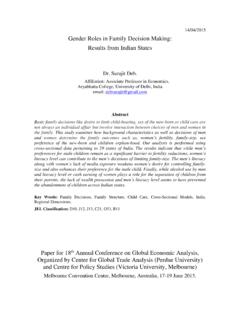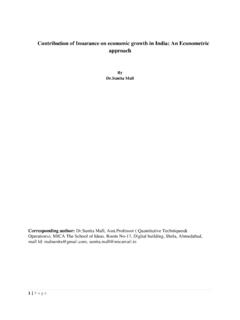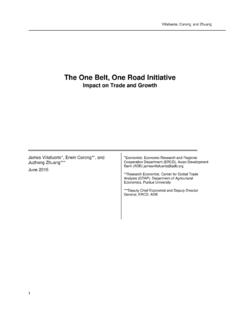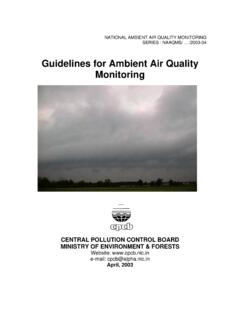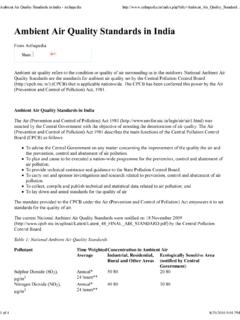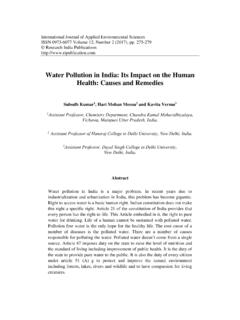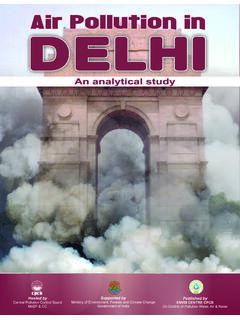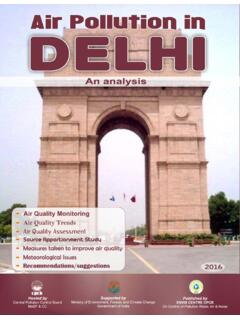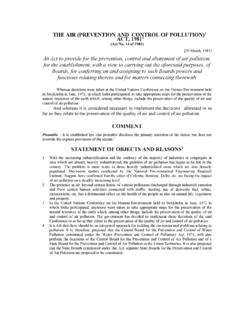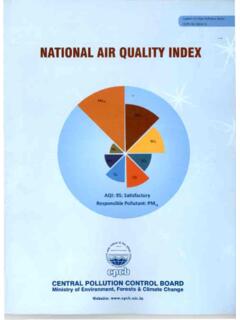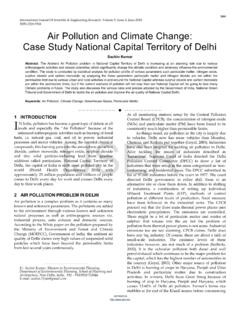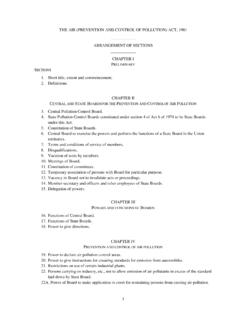Transcription of The Economic Consequences of Air Pollution
1 The Economic Consequences of Air Pollution This report is an output of the OECD project on Costs of Inaction and Resource scarcity: Consequences for Long-term Economic growth (CIRCLE). It contains an assessment of the Economic Consequences of outdoor air Pollution in the coming decades. The report was prepared by Elisa Lanzi, Rob Dellink, Chateau (OECD Environment Directorate), Mike Holland (EMRC) and Joseph Spadaro (BC3). Inputs to this report were received from Rita Van Dingenen (EU JRC, Italy), Zbigniew Klimont and Fabian Wagner (IIASA).
2 Please do not cite or quote. 1. Introduction Outdoor air Pollution is one of the most serious environmental risks, particularly in big cities and highly populated areas where it causes strong negative impacts on human health. It has also been recognised to have Consequences on the environment, with impacts on crop yields, biodiversity, land and water, and on human activities, with impacts on visibility and on buildings and materials, including cultural heritage.
3 Previous work shows alarming results on the severe impacts of outdoor and indoor air Pollution and in particular on the large number of premature deaths it causes. The most recent Global Burden of Disease (GBD) study estimates that air Pollution indoor and outdoor combined was the cause of million premature deaths globally in 2013 (Forouzanfar et al., 2015; Brauer et al., 2016), implying that air Pollution is the top cause of environmentally related deaths worldwide.
4 The 2010 GBD study (Lim et al., 2012), WHO (2014) and Lelieveld et al. (2016) estimate that outdoor air Pollution alone kills in the order of magnitude of 3 to 4 million people a year globally. The precise numbers generated by different studies under the Global Burden of Disease initiative are variable, reflecting refinements for example with respect to exposure modelling, and alternative positions for example with respect to the slope and shape of response functions. However, the studies are consistent in showing that air Pollution has a substantial effect on health and can be associated with several million deaths each year.
5 The negative impacts of air Pollution on health and the environment also lead to high Economic costs. OECD (2014a) uses a Willingness-to-Pay approach (and more specifically the Value of a Statistical Life, VSL) to estimate the Economic costs of outdoor air Pollution . It finds that the cost of the health impact of air Pollution in OECD countries (including deaths and illnesses) was USD trillion in The cost of the health impact of air Pollution was estimated to be USD trillion in China in 2010, and USD trillion in India.
6 It is less clear how the impacts and costs of air Pollution will affect Economic growth in the coming decades. This report aims to partially fill that gap by assessing the costs of inaction on outdoor air Pollution for a baseline projection to 2060. It focuses on the future biophysical and Economic Consequences of air Pollution in absence of policies other than the ones that are already in place. The report aims at illustrating that air Pollution will have Consequences on Economic growth at global level.
7 While the social and welfare costs of indoor air Pollution should not be ignored, this report only considers outdoor air Pollution . The reasons are two-fold. First, the health problems associated with indoor air Pollution are expected to decrease in the coming decades even without specific new Pollution control policies, as countries develop and access to cleaner energy sources becomes more widespread (cf. OECD, 2012a). In contrast, the Consequences of outdoor air Pollution are expected to become more severe over time if no further policy actions are taken.
8 Second, outdoor air Pollution is much more directly related to Economic activity, and thus a by-product of Economic growth, which is the focus of this report. This report assesses the costs of inaction of air Pollution using a so-called impact pathway approach. This approach, which was developed under the EC-US Fuel Cycles Study and the ExternE project (ExternE 1995, 2005, US DOE, 1992), calculates the Economic costs of air Pollution (or the Economic benefits of reduced air Pollution ) starting from emissions, through concentrations, exposure, biophysical impacts and valuation of the feedback effects on Economic growth.
9 1 Throughout this report, monetary values are presented in constant 2010 US dollars using Purchasing Power Parity (PPP) exchange rates ( international dollars ), unless otherwise indicated. For brevity, this is indicated in the text simply as USD . Previous studies have used the impact pathway approach in the context of an Economic valuation of air Pollution , mostly for the United States and the European Union. For the EU, such an approach was used to study the benefits of several directives and technology options aimed to improve air quality (European Commission, 2013; Vrontisi et al.)
10 , 2016; WHO, 2013a,b; Holland, 2014a,b; ExternE, 2005; Rabl et al., 2014). For the United States, the EPA has evaluated the benefits of the Clean Air Act (US EPA, 1997, 1999, 2011). A series of studies have also been carried out on the costs of health impacts of air quality for specific regions (Matus, 2005; Matus et al., 2008; 2011; Nam et al., 2009; OECD, 2014b) and, for ozone only, at global level (Selin et al., 2009). This report applies the impact pathway approach to calculate the major biophysical impacts and associated costs of inaction of outdoor air Pollution at the regional and global level to 2060.
